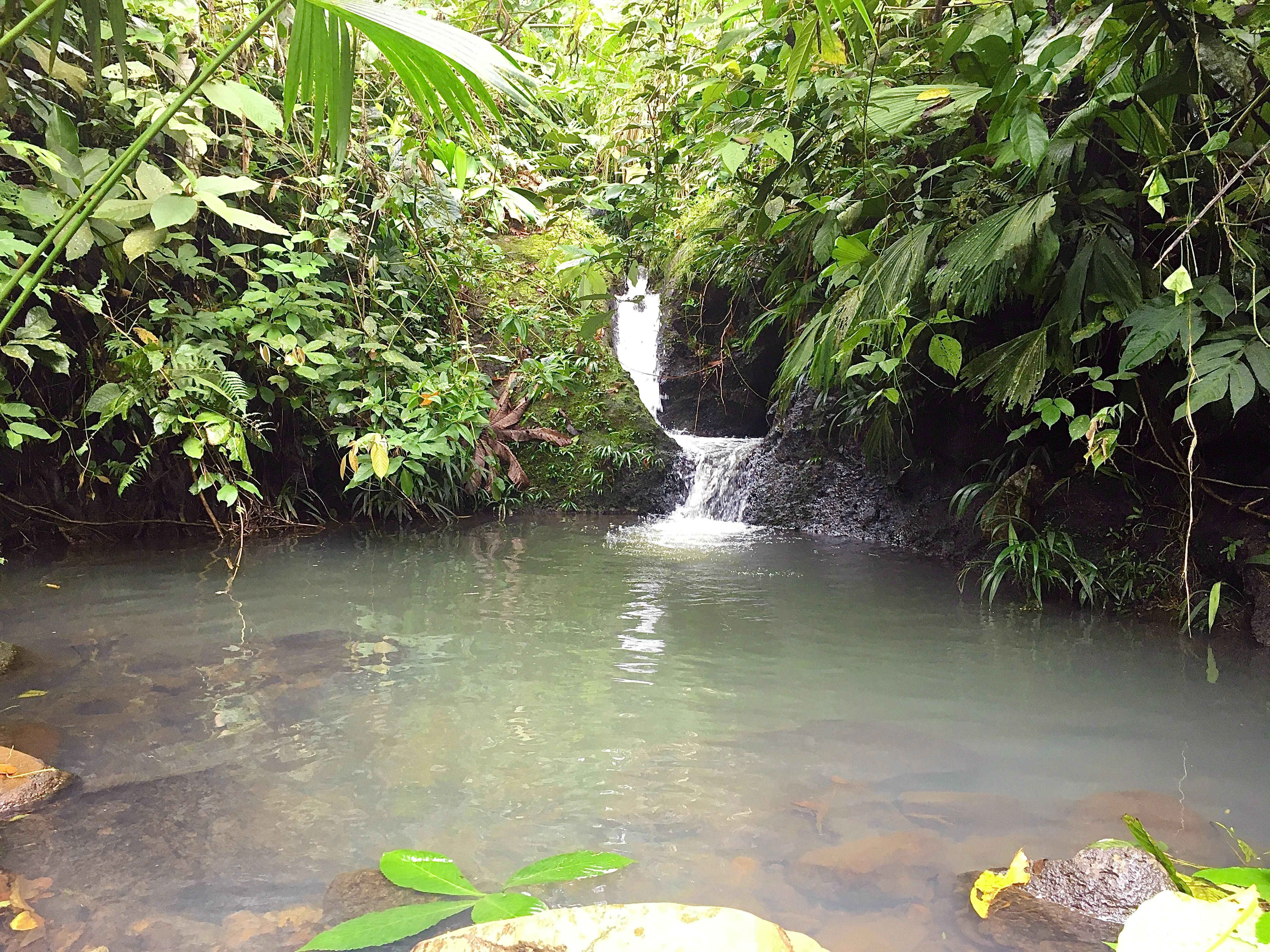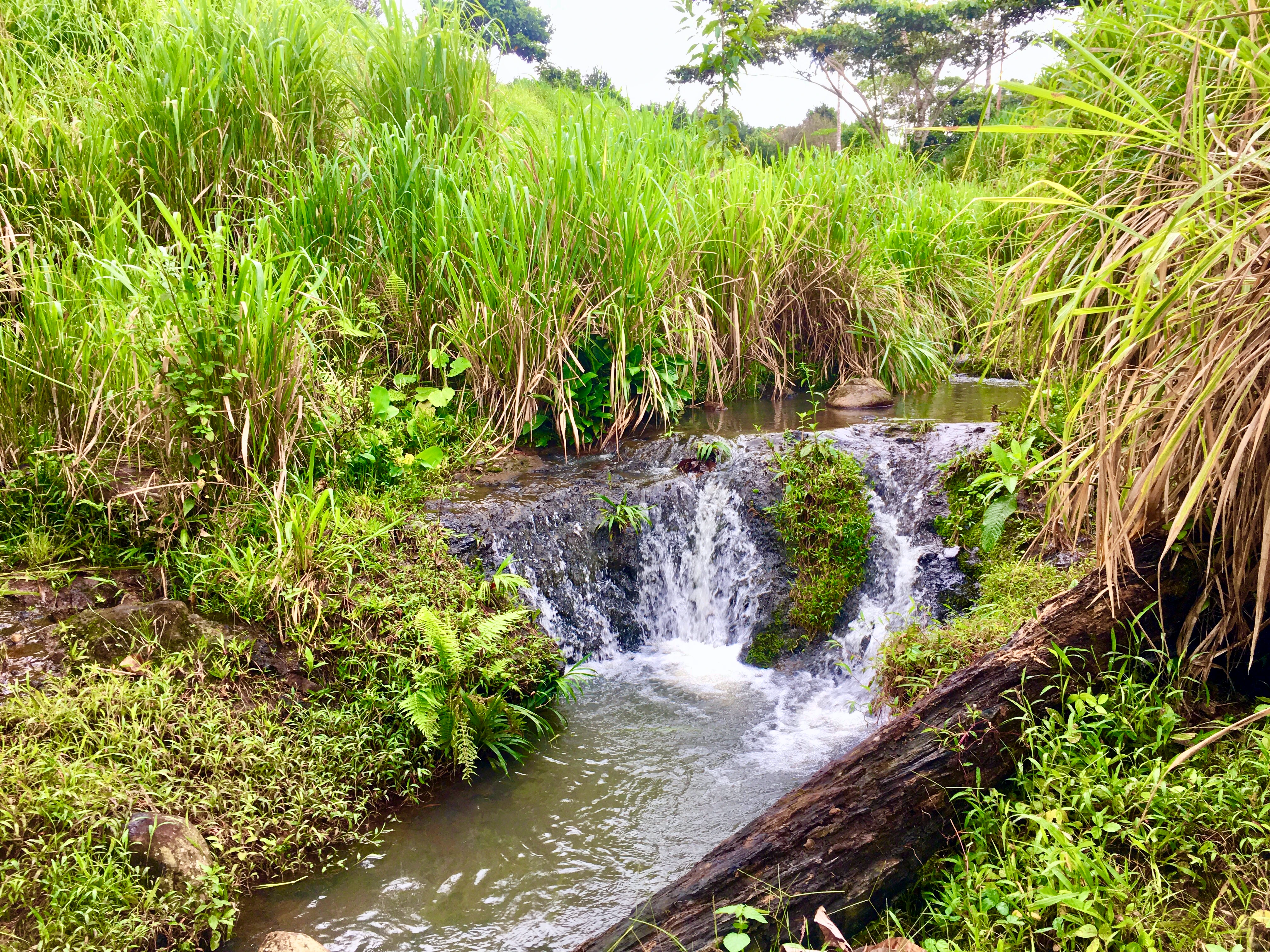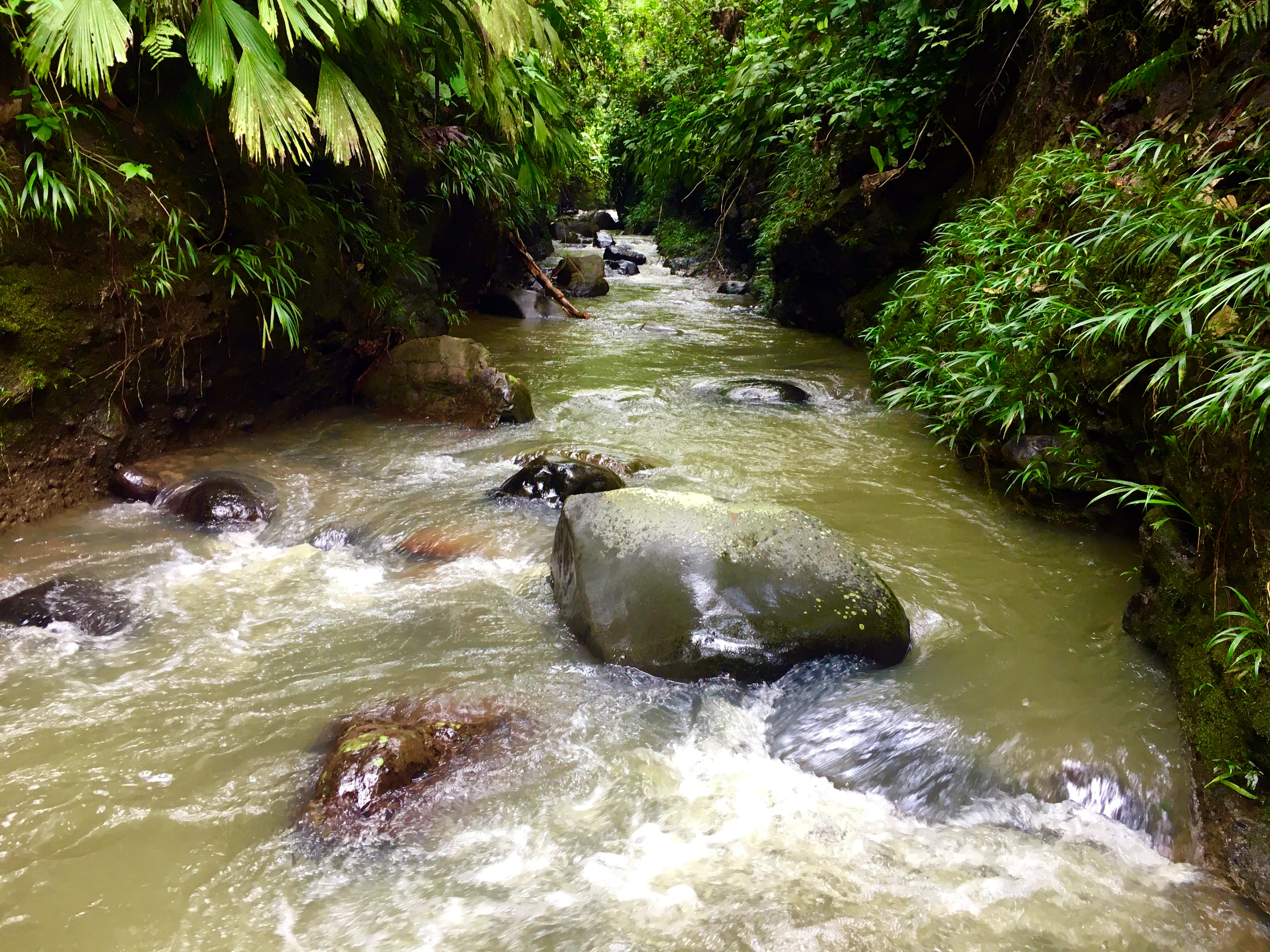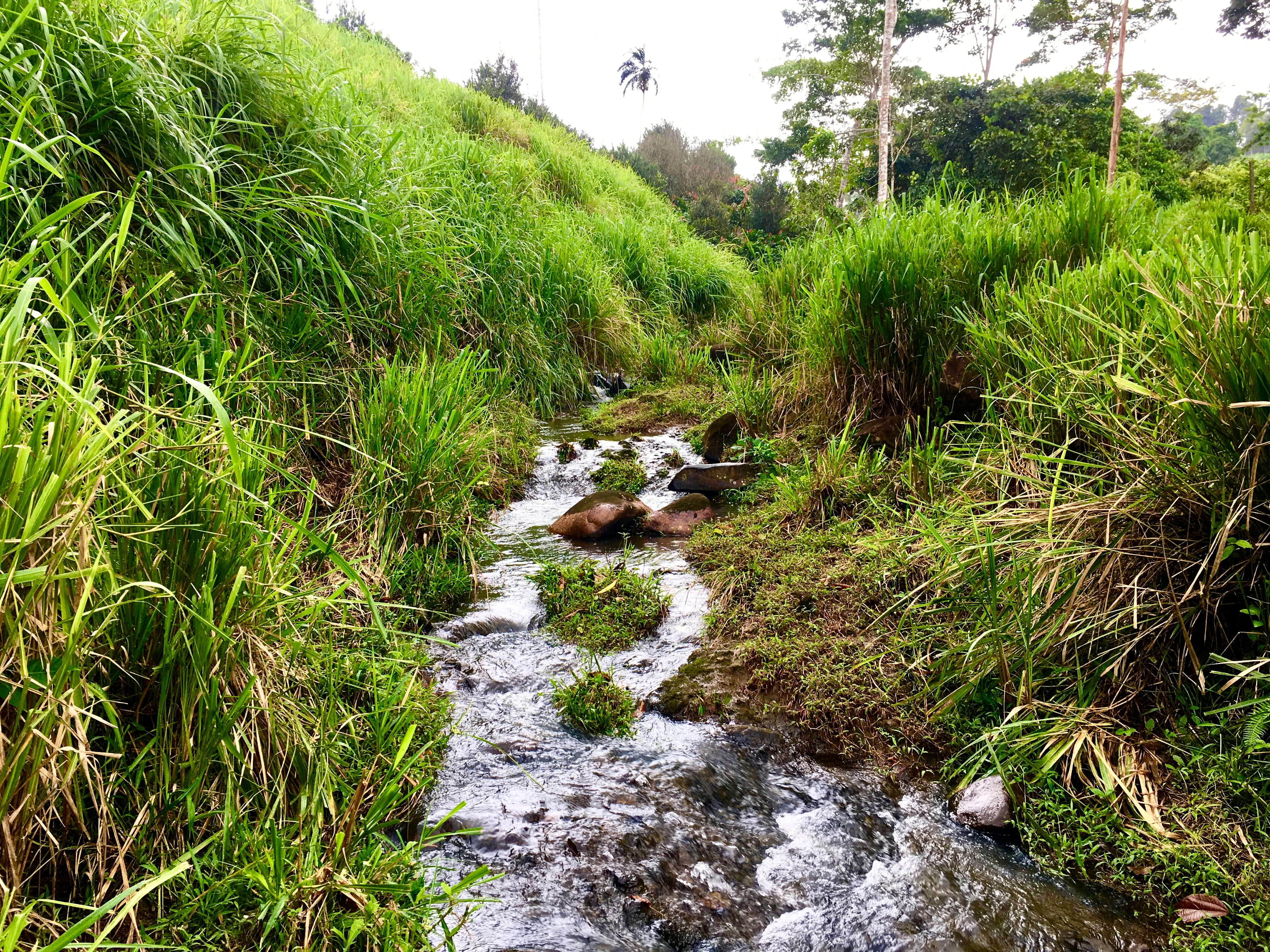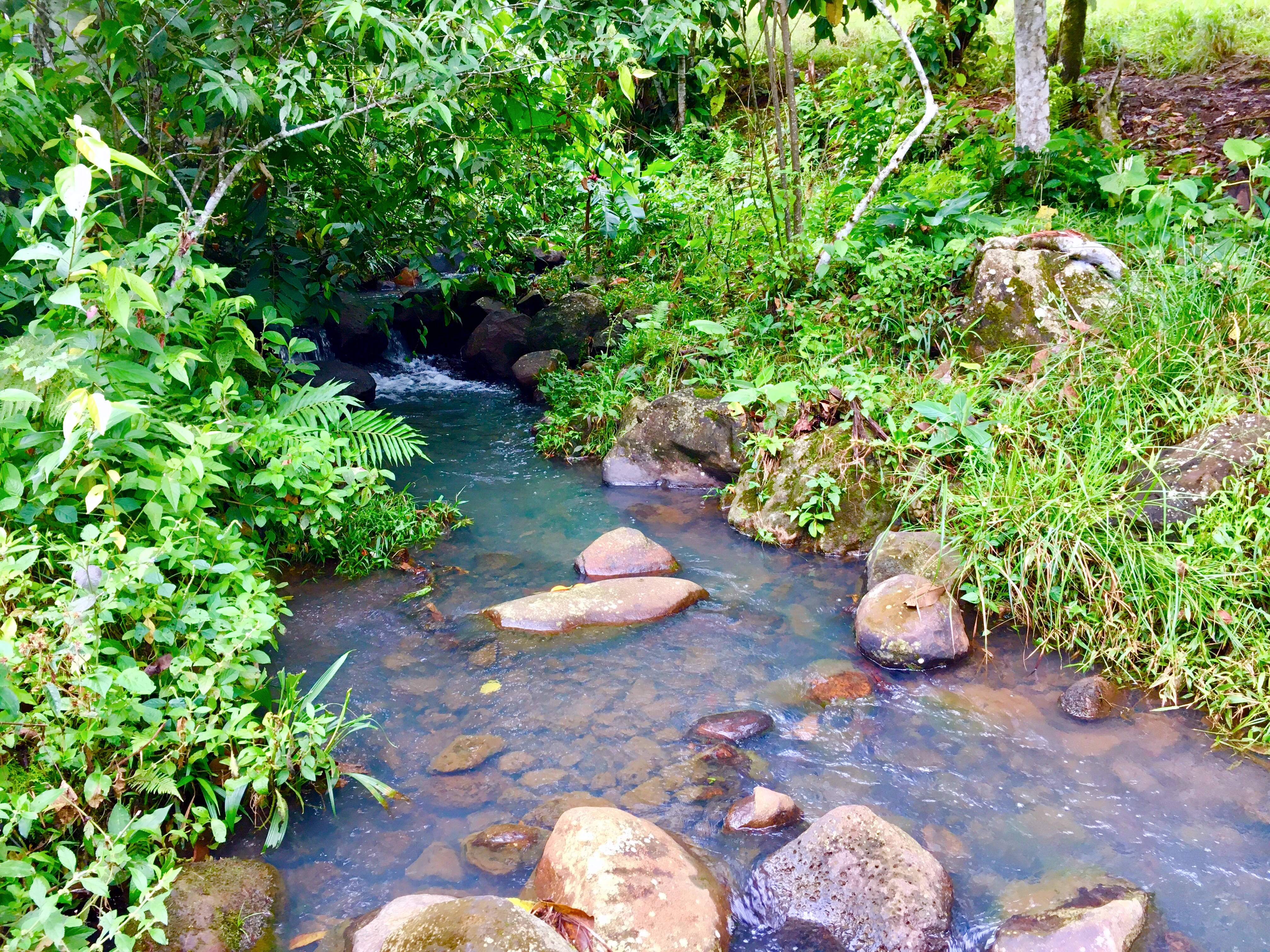Vegan Reforestation & Food Forest Project
in the Amazon of Ecuador
Imagine a lush tropical valley, wild and full of diverse life…
Rivers and streams flowing through an abundant jungle of fruit…
Friends, freedom, independence, peace, and privacy…
This is the future of Badass Fruiterrarist Land, a valley in the Amazon of northern Ecuador where we are reforesting and creating food forests for self-sufficiency and food freedom.
Large farms are available in this area at a low cost per hectare (to our knowledge, some of the cheapest in the tropics) to grow your food and live your way, but with the friendship and support of like-minded people around you.
Buy your own land or share with others to conserve and reforest, with the opportunity to ditch Babylonnoun: the entire matrix of the financial, legal, industrial, military, media, medical, education, entertainment, transportation, technology, religious, and virtually every other man-made complex and live freely in the tropics.
This is not a traditional “intentional community” with a formal structure, leadership, governance, rules, meetings, or sharing circles… and it never will be. This is an area where people who hold strong vegan ethics and share the same core values can live in proximity while collaborating to revive an ecosystem and grow a radical abundance of fruit.
Vision
We envision a private, peaceful, diverse, abundant, and self-sustaining food forest ecosystem
which shelters all fruiterrarists great and small
from the vices and viciousness of Babylon, from the seasonality of the savanna,
from the tyranny of collectivism and conformity, from the tragedies of hate and indifference.
Background
The Ecuadorian Amazon, where the Amazon basin meets the Andes mountains, is one of the most biodiverse regions in the world. Countless species of animals[1] depend on this rainforest for their food, water, and shelter. Large, contiguous forest ecosystems connecting lowlands to highlands[2] are vital for protection of native animals as the Amazon warms and dries, but fragmentation of the forest has already isolated many animal populations and made it dangerous for them to travel. Further deforestation could wipe out keystone plant species on which these animals depend and which support the entire ecosystem.
The expansion of animal agriculture (mainly cow pasture) is the main driver of deforestation in Ecuador, and it is facilitated by new roads built in order to access petroleum reserves and other resources destructively extracted from the Amazon. Road access[3] also leads to an increase in human settlements, and the high birth rate takes its toll on the natural resources.
Mission
Our mission is to reclaim and reforest this land in western Orellana,
to cultivate a contiguous and abundant fruit forest,
and to form a local network of fruiterrarists who preserve the tranquillity of the forest
for all peaceful wild beings to enjoy in perpetuity.
Project Overview
Badass Fruiterrarist Land is where we start unfucking stuff up. This is a beautiful valley near the Sumaco Napo-Galeras National Park with gentle rolling hills, many rivers, streams, and waterfalls, superb weather year-round, and tons of space for growing a large-scale sustainable food forest.
We started the project with a 3.52-hectare plot of land that we are restoring from cow pasture and monoculture cacao/coffee plantations to high-density fruit forest with a variety of native and exotic trees and other beneficial vegetation.
Many of our neighbours want to sell their land, so we are inviting like-minded people to restore the misused land back to a healthy, self-sustaining, biodiverse forest ecosystem and to create a network of fruiterraristnoun: someone who blatantly plants as much fruit as possible, regardless of what non-fruitarians may think, with the aim of creating an alternative to Babylons working together toward achieving the same goals. Reforesting and protecting this area will provide critical habitat for many native animal species.
With each and every day that goes by, more and more people are destroying land here, so the time to do something is now.
We can support each other by sharing knowledge, experience, seeds, seedlings, harvests, and labour, all on a voluntary basis with the intention of strengthening each other’s efforts for the benefit of the food forest, but without force or requirement — true freedom and voluntaryism.
We can provide guidance to people who would like help with finding the right land, the land acquisition process, reforesting, creating and managing a food forest, living in Ecuador with or without a longer-term visa, and navigating life here in general. We try to keep things as simple and straightforward as possible.
The Area
There is one main road through the valley with a few side roads, and the fincas are mostly between 10-60 hectares with space between most houses. There is grid electricity and fibre-optic internet available. This area has plenty of wild jungle, but most of the land near the road has been completely deforested and is used for cattle and cacao farming.
At the end of the main road there are multiple bioreserves next to a massive and mostly unexplored national park, all full of native forest, wild rivers and waterfalls, and many rare and beautiful plants, animals, and other life.
The roads are mostly gravelled, and the main entrance road is connected to a paved road that has bus service, a few small general stores, and some tourist and recreation areas.
The town of Loreto (about 20 km away) is relatively small and quiet with a variety of produce markets, hardware stores, mechanic shops, and other basic services.
This area of Ecuador has little crime, a low cost of living, and a very simple and slow-paced lifestyle. People here are generally kind and friendly but either ignorant of or apathetic toward the destruction that they are causing to the land by animal exploitation and monoculture farming practices.
This is a perfect setting for making a real change, reversing the damage that other humans have done, and creating a food forest paradise for the security and independence of those who participate. If you are a badass fruiterrarist wanting to escape from an oppressive regime, this could be a safe haven where you and like-minded others can enjoy freedom together.
If not you, who? If not now, when?
What Do I Do?
- Buy Neighbouring Lands
Conserve, reforest, create food forests, live here full- or part-time, manage the land yourself, collaborate with project participants to co-manage in your absence, or just let the land reforest itself naturally.
-
Make a Contribution
Participate in crowdfunding to help someone else to purchase land, so that your contribution is used specifically for acquiring land to be conserved and reforested in the Amazon.
Send us an email with “Crowdfunding” as the subject. -
Volunteer
Visit one of our projects as a volunteer in order to gain first-hand knowledge and experience about the impact of current land (mis)use in the Amazon as well as the efforts to stop and reverse the damage being caused.
Click here for information about volunteering. -
Donate or Trade
We don’t accept money, but we are happy to receive seeds, trees, cuttings, or tools.
Click here to see our wish list and what we have available to trade.
If you would like more information, please feel free to read through more of this website, or contact us here.
On behalf of all of the plants, animals, and other lifeforms in this majestic land, we thank you for your interest in doing your part to create a more sustainable world while helping to save the Amazon Rainforest and all of the life that depends on it.
“If we don’t do something now, it may be too late if we ever do…”
1.
For example, in the Sumaco Napo-Galeras National Park adjacent to Badass Fruiterrarist Land, 872 species of birds have been recorded, most of them endemic to the Amazon region.
2.
Ecosystems that connect lowland rainforests to highland rainforests and cloud forests allow native animals to migrate to higher elevations in order to escape the effects of climate change.
3.
Studies in the Brazilian Amazon have shown that 95% of deforestation happens within 5.5 km of a road, and 85% of fires each year occur within 5 km.
